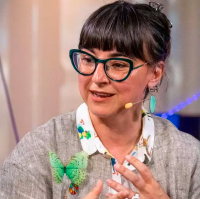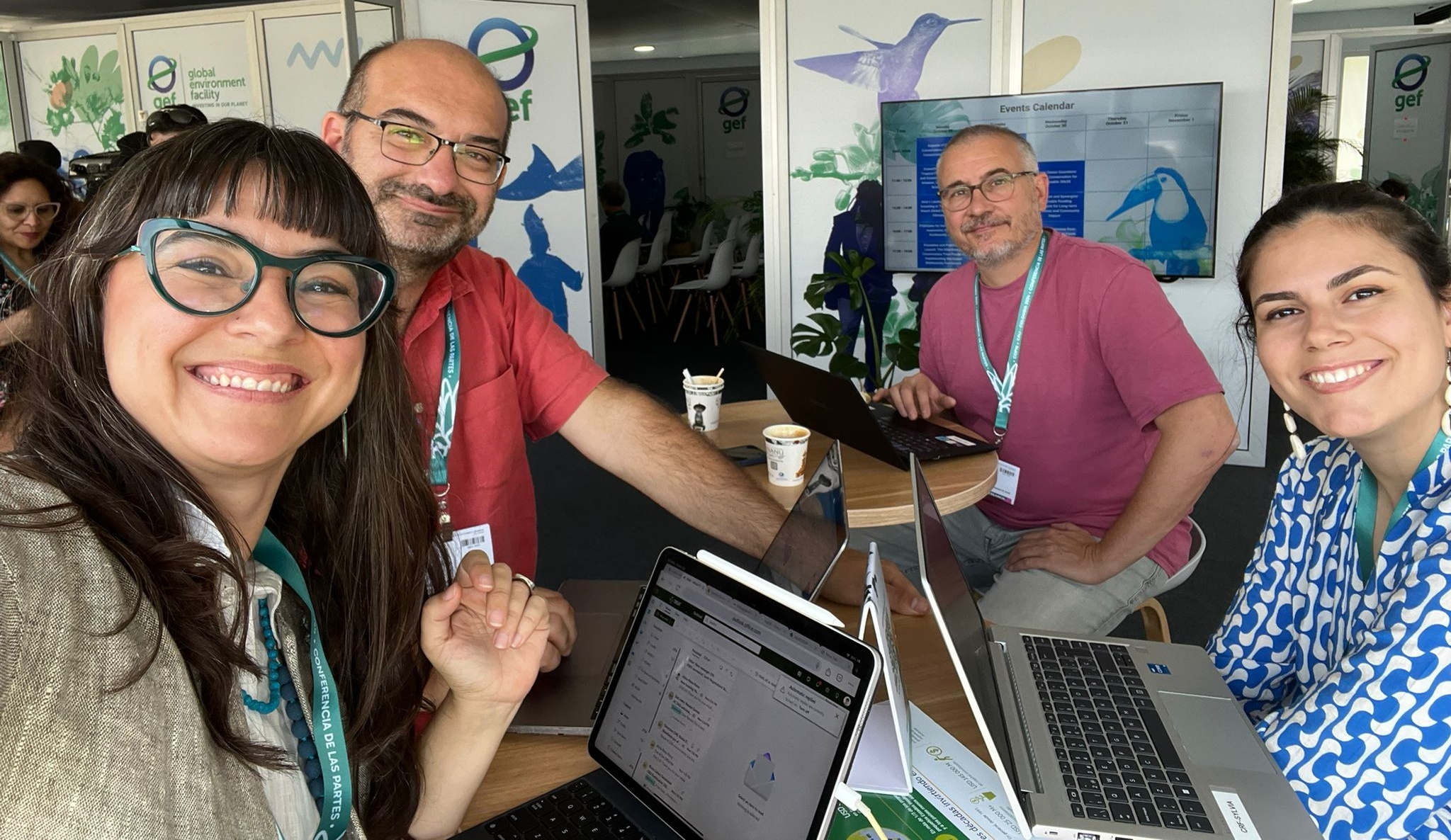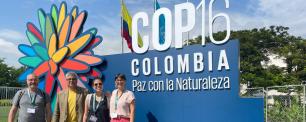What is at stake in COP16 to protect life on Earth
The significance of COP16 - the United Nations global biodiversity conference starting this week in Cali (Colombia) - is closely linked to the historic agreements of the Kunming-Montreal Global Biodiversity Framework (GBF) signed at the previous edition, two years ago. At the 16th World Summit on Biodiversity from 21 October to 1 November 2024, representatives from 196 countries must establish how to take action to protect life on Earth, with a focus on preserving and protecting nature. "COP16 in 2024 must establish the rules of the game and that is precisely why it is key, given the success of signing the historic commitments in 2022 at COP15", explains Alicia Pérez-Porro, head of Policy Engagement and Institutional Relations at CREAF, who is attending COP16 with a delegation from the centre.

“The summit, which has only just begun, must enable us to get moving in a very clear direction, and this means establishing monitoring and follow-up frameworks, determining indicators, providing financial and methodological clarity, as well as defining real objectives to be able to follow up on the degree of fulfilment of the commitments”.
ALICIA PÉREZ-PORRO, head of Policy Engagement and Institutional Relations at CREAF.
CREAF and COP16
CREAF's scientific activity is directly linked to several objectives of the 16th UN Conference of the Parties being held in Colombia. For this reason, a team of professionals from the centre with different profiles has travelled to Colombia. There are two main reasons why CREAF has an active presence at this world summit. Firstly, because its team is involved in scientific projects (such as RESPIN) and international initiatives on biodiversity (such as the Intergovernmental Platform on Biodiversity and Ecosystem Services, IPBES) and, secondly, because, as a public centre, CREAF provides scientific support specialising in biodiversity to various governments and government representatives. In the second section, at COP16 CREAF is advising the international organisation of subnational governments Regions4 and the Ministry of the Territory, Housing and Ecological Transition of the Government of Catalonia on scientific issues related to biodiversity.
COP16’s negotiations agenda in which CREAF is actively involved:
![]() Define methodologies for monitoring and following up on the agreements of the Kunming-Montreal Global Biodiversity Framework.
Define methodologies for monitoring and following up on the agreements of the Kunming-Montreal Global Biodiversity Framework.
CREAF researcher Lluís Brotons is one of the 80 specialists from all over the world who make up the scenarios and models working group of IPBES, the organisation that received the mandate from the Convention on Biological Diversity to structure the methodologies for monitoring and tracking the preservation of biodiversity. The challenge is the consensus among countries to put into practice these agreements, which are often unfulfilled despite the warnings of science on the state of nature conservation. COP16 wants to be different and governments are expected to present their roadmaps known as the National Biodiversity Strategies and Action Plan.
![]() Scientific assessment to the Generalitat de Catalunya government.
Scientific assessment to the Generalitat de Catalunya government.
Although the Catalan government has its own agenda at the World Biodiversity Summit in Colombia, there are several points of convergence with the activity to be carried out by CREAF. To begin with, the collaboration is structured around the Respin scientific project, the meetings and contacts linked to the Mediterranean Climate Alliance Partnership promoted by the Catalan and Californian governments and presented at COP28 in 2023, as well as various events and meetings with collaborators and international contacts.
![]() Respin and BioAgora or how to break down the barriers between science and political action.
Respin and BioAgora or how to break down the barriers between science and political action.
A sub-national workshop is being held at COP16 as part of the European research project Respin, Innovative strengthening of science-policy interfaces to increase the effectiveness and interconnection of biodiversity and climate policies in which representatives of the government of the Generalitat of Catalonia are taking part and which is led by the Humboldt Institute of Colombia. The call seeks to answer what are the limitations that prevent the application of scientific criteria in public policies on climate change and biodiversity.
Respin identifies barriers that limit the transfer of existing scientific information (such as that generated by IPBES and IPCC) to public policies on climate change and biodiversity. It is interesting to note that he also wants to locate what limits the coherence between public policies on climate change and on biodiversity to be more coherent and go more into one, and how to work more together to avoid watertight spaces. Lluís Brotons and Alicia Pérez-Porro from CREAF are the main researchers.
The project will also take part in a parallel event convened in the European Commission pavilion, which is a monographic space on science for public policies. In this space, the EC will present the results of the COP4CBD, BioAgora, Respin and Biodiversa+ projects, with the participation of CREAF. Likewise, the CREAF will also represent the BioAgora project, a project very oriented towards specific actions so that scientific knowledge reaches decision-making and which is leading, among other actions, a center of scientific services for biodiversity capable of responding quick questions from the EC. In this context, the center already participated in a report that answered the question of what to do with the dead wood of the forests from the point of view of the conservation or promotion of biodiversity.
![]() Scientific advice at Regions4, an international organisation of sub-national governments.
Scientific advice at Regions4, an international organisation of sub-national governments.
The Regions4 network of sub-national governments plays a catalytic role in COPs because it does not intervene as an accredited member, a role reserved for national governments. Regions4 is an observer. However, its active participation is relevant because it is sub-national governments that implement both biodiversity and climate policies on the ground. In this case CREAF acts as a scientific arm for the specific area of biodiversity.
![]() Mediterranean Climate Action Partnership, MCAP.
Mediterranean Climate Action Partnership, MCAP.
As a public scientific representative and advisor to the Catalan Government, CREAF accompanies the government in all matters relating to the Mediterranean Climate Alliance Partnership, made up by countries with a Mediterranean climate, which is present at COP16.
The high scientific component of a COP
A final important reason why a centre such as CREAF is taking part in the World Biodiversity Summit in Colombia these days is "the undeniable scientific component of the global environmental challenges being debated", in the words of Alicia Pérez-Porro. And taking this element into account is necessary both to understand what is happening in terms of climate change and the consequent loss of biodiversity, and to assess the consequences of inaction. In other words, "the scientific basis is relevant, both to understand and warn about what happens if the temperature continues to rise, and to design efficient solutions", explains Pérez-Porro.

However, science is not the only discipline that should inform policy-making processes; economics and social sciences also play a role, to name but a couple. "Furthermore, science must be represented in these conventions not only through official bodies such as IPBES or the IPCC, which inform international processes, but also through scientific advice from government delegations, with NGOs with lobby capacity, such as the World Wildlife Forum (WWF), with specific groups such as indigenous communities, which have a great deal of weight at the COP on biodiversity and a parallel agenda to raise issues and push for solutions, for example", explains CREAF's head of science and public policy.
The CREAF team present at the 16th. In addition to Alicia Pérez-Porro, the CREAF team present at the 16th Conference of United Nations Organisations 2024 included the director of the centre, Joan Pino Vilalta; the principal investigator of the Respin project and member of one of the IPBES working groups, Lluís Brotons; the researcher and scientific representative of the Observatory of Natural Heritage and Biodiversity, Daniel Villero; and Anna de las Heras Carles, a member of the Respin project team.
In a graphic way, Pérez-Porro draws the COPs as chapters in a continuous sequence: ‘In a COP, the world is not fixed, but rather progress is made’, she concludes.







